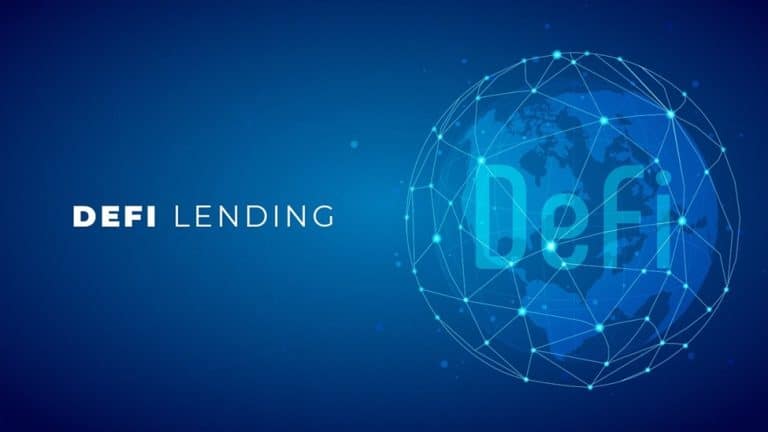A6-The AI Face Swap Revolution: A Strategic Guide to Pro-Level Image and Video Workflows

The face swap revolution is no longer in sight; It is here, fundamentally dividing the creative landscape. On the one hand, there are amateur enthusiasts who view this technology as an outdated gimmick or toy for social media filters. On the other hand, professionals – marketers, filmmakers, and digital artists – believe that this is one of the most important and disruptive tools of the past decade. But this power cannot be unlocked with just one click. The market is filled with simple applications that can produce vague, incredible, and unconvincing results. The secret to surpassing the ‘uncanny valley’ and producing truly realistic and impactful content lies not in a single tool, but in a strategic workflow. The technology required for perfect static image AI face swap is an independent art form, different from the complex motion based engineering required for trustworthy video AI face swap. This guide is a new professional script. We will deconstruct the ‘artificial intelligence stack’ that separates high-end results from amateur attempts, shifting from the basic principle of static exchange to an advanced multi tool pipeline that defines the future of digital content.
Beyond the Filter: The Art and Science of a Flawless Image AI Face Swap
The main obstacle to achieving trustworthy image AI face swap is that most users misunderstand what actually happened. High quality AI face swap is not the ‘cut and paste’ filter in early photo editors. This is a complex generation process. AI first analyzes the target image and carefully maps its unique environment: the direction and color of light sources, the hardness of shadows, the precise 3D angle of the head, and skin texture. Then, it will generate a new face based on the identity of the source image, combining “re lighting” and “re posing” to create it in a new scene. This is precisely the reason why most swap transactions fail. If you give artificial intelligence a blurry, low resolution source face, it will not have high-quality data to ‘generate’, resulting in blurry artificial output. This is the beginning of professional workflows or “AI stacks”.
The first non-negotiable step is preparation. Before you attempt to exchange, your source facial photo must undergo image enhancement processing. This AI driven tool can improve resolution, sharpen key details such as eyes and hair, and correct noise, providing raw, data rich files for exchanging AI. The second step is isolation. Professionals use a background remover on the target image instead of attempting to swap face in a chaotic, busy scene. This creates a ‘digital asset’ for the subject, allowing artificial intelligence to only focus on the face and body, without being confused by background elements. After performing photo face swap on this clean resource, you have complete control over your creativity and can place new themes in any background of your choice. The final ‘master level’ step is emotional alignment. A common failure is to replace a neutral face with a body that is clearly smiling or nervous. This has caused an unpleasant psychological disconnect. The solution is to use a facial expression modifier as the final touch up, allowing you to add a subtle smile, surprised expression, or neutral gaze to perfectly match the target’s body language, thus completing the illusion of reality.
The Motion Challenge: Mastering Temporal Consistency in Video AI Face Swap
If mastering image exchange is an art, then mastering video AI face swap is a complex project. Due to a concept of time consistency, the difficulty increases exponentially. In static images, AI only needs to process correctly once. In the video, it must be played correctly thousands of times in each frame. The new face must be completely ‘locked’ in the 3D motion of the target’s head, without any momentary signal flickering, shaking, ‘swimming’ or ‘sliding’ that breaks the illusion. Whenever subjects quickly turn their heads, or their faces are partially covered by their hands, or there is a risk of artificial intelligence trackers failing due to drastic changes in lighting. That’s why 99% of the video exchanges you see look so fake. They are built on low-quality, low-quality source data.
Therefore, the professional video face swap workflow is almost entirely focused on data preparation. You cannot build a stable house on a weak foundation. For any serious video project, the first and non-negotiable step is to first process the entire source clip through a video uploader. This AI tool converts a granular compressed 720p or 1080p file into a clear, detail rich 4K clip. This upgraded shot provides thousands of clean and clear anchor points (such as pore details, eye corners, and lip lines) for artificial intelligence facial trackers, making the trajectory more stable and realistic. The second key step, especially when dealing with files or downloaded materials, is to clean up the source. This is where watermark removers become priceless. The logos, time codes, or other text artifacts on the screen may catastrophically confuse the tracking algorithms of artificial intelligence. By using an AI watermark remover to create a ‘clean plate’ before the exchange, you can ensure that the AI only tracks what it should track: faces. Only after completing these ‘digital recovery’ steps can you try video face swap and expect professional movie effects.
The ‘Synthetic Media’ Stack: Where Face Swap Meets Voice Cloning
The true next frontier of this technology – it becomes truly ‘disruptive’ – is when you combine visual synthesis with audio synthesis. Silent video face swap is an impressive visual effect, but a swapped face that can speak with a new, controllable voice is a completely new form of media. This is the ‘synthetic media stack’, which is the workflow that top creators are now mastering. It allows historical figures to be fully and reliably resurrected, creating fully synthesized brand ambassadors, or localizing video ads for over a dozen different languages and markets without the need for reshoot. This workflow combines the video technology we discussed with a more advanced tool: voice cloning technology.
The following is the professional workflow:
- Visual restoration: You start from your source shot (e.g. a blurry interview from the 1950s). As mentioned earlier, you can set it to 4K using a video scaler and clean it using a watermark remover.
- Visual synthesis: You perform video face swap, perhaps to make the speakers older or even replace them with digital humans.
- Audio cloning: You take separate, clean audio samples of this person’s voice (even if only for 30 seconds). You upload this to the voice cloning AI, which will analyze the unique pitch, rhythm, and texture of their speech.
- Audio generation: You type in a brand new script, and artificial intelligence will generate a new, flawless audio file that records the person who said your words.
- Final synthesis: You synchronize the audio generated by this new AI with the video generated by your new AI. You just created a synthetic media that is indistinguishable from reality.
From a simpler and more direct perspective, the same logic also applies to social media. GIF face swap is just a short looping video face swap. To create a truly viral high-resolution meme, you must first use a video scaler on the original source clip, and then perform a GIF face swap. This combination of tools is the engine behind the next generation of content.
The New Standard: Why Integrated AI Platforms Are the Future of Content
The central theme of this master class is that high-end face swap results are not the product of a single tool, but the product of an integrated artificial intelligence workflow. The era of using ten different, disconnected, single purpose artificial intelligence websites is over. It has low efficiency, high cost, and can cause file format nightmares. The future of the creative industry – and the key to democratizing this power for all creators – lies in a unified and integrated platform. This is a new standard. What modern creators need is an ecosystem, not a small tool. They need a single environment that can upload files and seamlessly move them through pipelines: from image enhancers or video scalers to background removers, then to photo face swap or video face swap engines, and finally to speech clones or facial expression changers for final polishing.
This integration method is the core concept behind next-generation platforms such as faceswap-ai.io. They are built from scratch to recognize that these tools are not independent novelty, but rather interconnected parts of a larger creative process. This unity is the only way for everyone to use these powerful workflows, from small business owners to Hollywood visual effects artists. Of course, this concentration of power requires serious dialogue on moral issues. The issue of ‘deepfakes’ is real, and these platforms have a responsibility to lead in a’ moral first ‘manner. Clear boundaries must be agreement and intention. Applying this technology to art, imitation, film production, and personalized choices is a creative revolution. Using it to deceive, harass, or create images that are not mutually agreed upon is an illegal act. By responsibly embracing these powerful integrated toolstacks, we are not just swap face; We are changing the way we create and tell stories.





